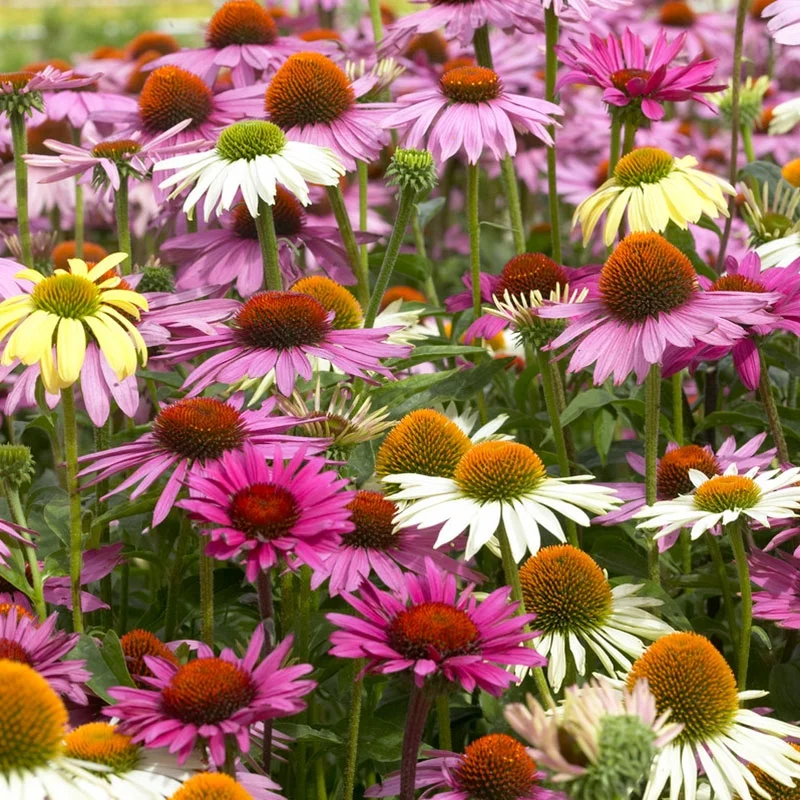
Echinacea, you can never have enough of them, ever, ever, ever. Tis mid summer/early autumn and the flowering perennial Echinacea are at their magnificent and glorious best.
I dream of them. Long, large, expansive fat fields of them, an endless massed blanket of forever sunshine extending far off into the horizon, shining so bright with their dazzling array of colours, as if the gods have descended and kissed the earth to create such a spectacular vision. I wish I had the room to plant such a spectacular thing. But alas that will never happen. For some silly stupid reason, I have absolutely zero available room left for such a grand planting.
Back to facts. Echinacea have dark green lance shaped leaves, with their leaf mound growing to a width of 45cm. Their daisy like flowers are about 10cm in width on single stems rising to about 1.2 metres in height, with a high central cone stiff and quill like, dark in colour and touched with orange/gold illumination. A big bingo of simply stunning.
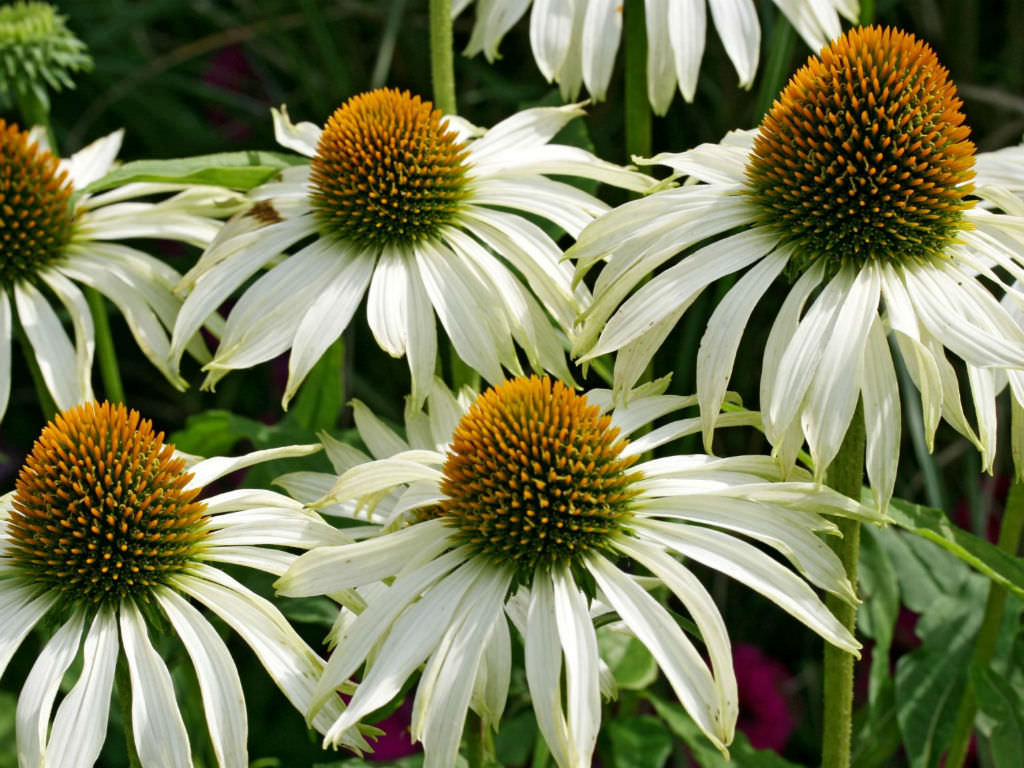
The most common are the white and pink flowering varieties, E. purpurea. Modern hybrids have thrown up new vivid flower colours, drenched rich in pigments, with an immense variety in differing shades of oranges, yellows, purples and reds. There is a pallida variety, taller, with long droopy reflexed petals. They are quite charming and have a wilder feel to them and great for massed plantings. There are also a range of new double flowered varieties. Another is a green-eyed variety, which I saw a good 15 years ago. Sadly, I missed the chance, they sold out immediately and I have never seen one since, a great example of one of my life’s mottos, ‘there is now and then there is too late’.
Echinaceas are native to the large vast areas of North American plains. The widest selection come from the grasslands of Oklahoma and Missouri where the summers are hot and humid with long cold winters often protected by the covering of snow. The name Echinacea is of Greek origin, ‘echinos’ meaning hedgehog referencing to the crown of sharply pointed sepals surrounding the corolla of the flowers.
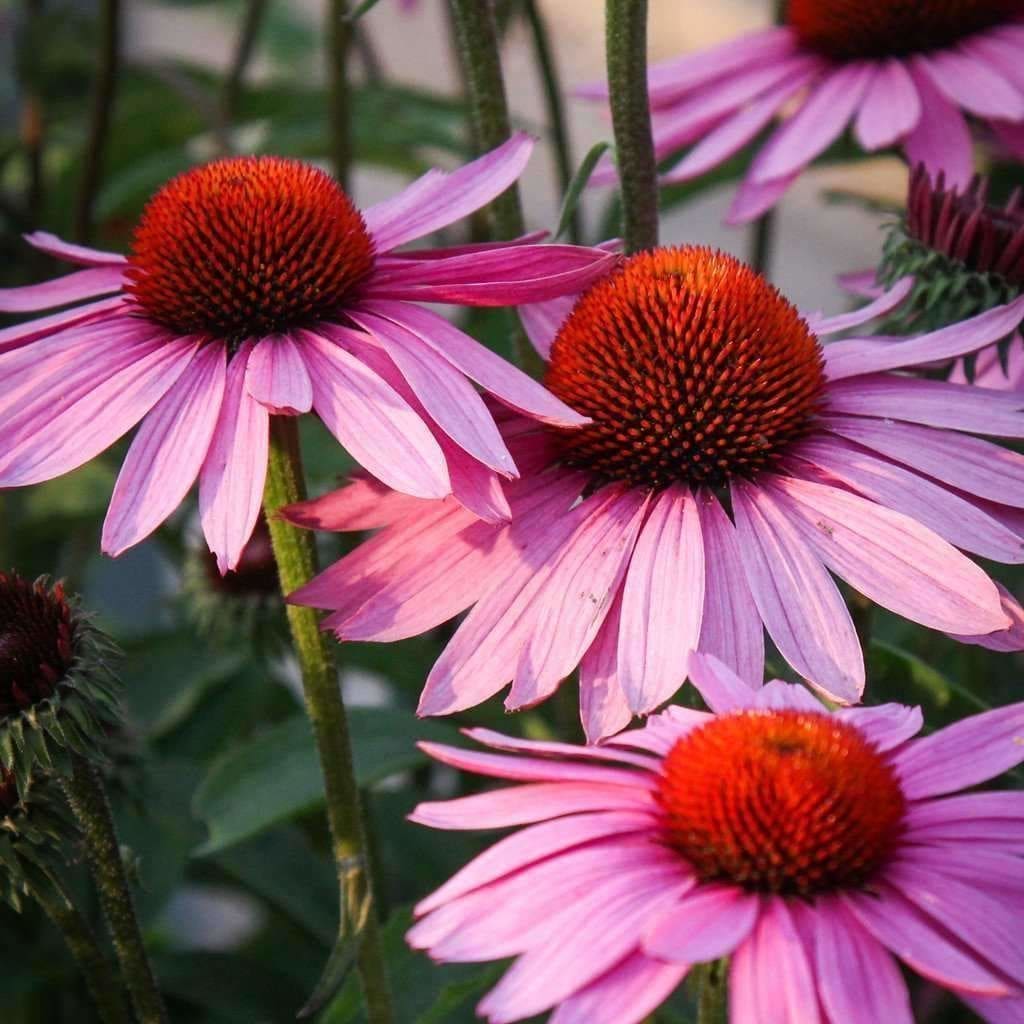
They are the ideal candidates for any garden style, whether it be cottage, formal or prairie. Planted en masse alone, if you have the space, will create a scene of true beauty. Or to elevate further, strategically yet in random positions, to interplant with other summer/autumn perennials such as white Gauras, Perovskia -blue Russian sage, Echinops and Salvias. They are all perfect companion plants.
In my own garden I believe I have a reasonable enough collection of them, though limited in number due to the limited size of my garden. They reside in two separate beds, comprising a good dozen in each, with a further few single plantings around the garden and a few in pots.
The white and pink varieties are by far the easiest to thrive and survive and readily throw out their seeds to self-sow around the parent plant. Sadly, the newer hybrid colours can be more temperamental and problematic. In my experience they only live for a single year or two. My research has suggested that these newer hybrids have been created from tissue culture and thus for some reason have poorer and inferior root development and as a consequence sharp drainage is a mandatory requirement. This is what I understand, but I could be completely wrong.
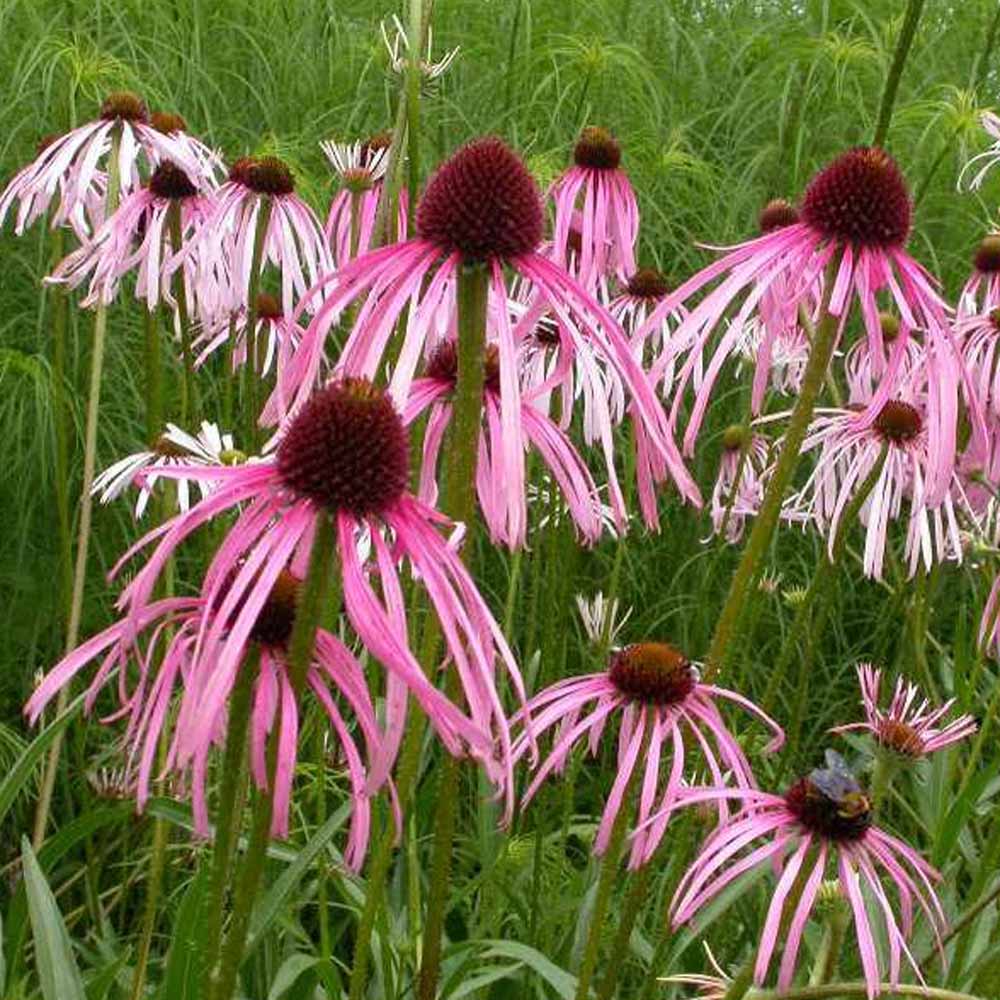
For example, I have often attempted to grow the newer rich crimson pink and orange flower varieties with a white all snuggled together in a single pot. Thus they receive the exact same conditions and attention. I can cosset them through their first autumn and winter, but as soon as the dawn of spring arrives the newer hybrids just turn up their toes with a quite surrender before their sad goodbye. On the other hand, the white merrily soldiers on and will last for many years. Now I am not advocating to avoid them, just a small warning for more tender loving care in their cultivation is required. Still give them a try, maybe you are more capable than I.
Not ever considering defeat, this year I am creating a new far improved soil condition for my Echinacea. It includes a mixture of sand for greater drainage, more cocoa peat for higher water retention and again better drainage, large quantities of Seamungus for greater root development and strength in health, and a light dressing of Rooster Booster as a fertiliser. Cross fingers that this will improve their longevity. Time will tell.
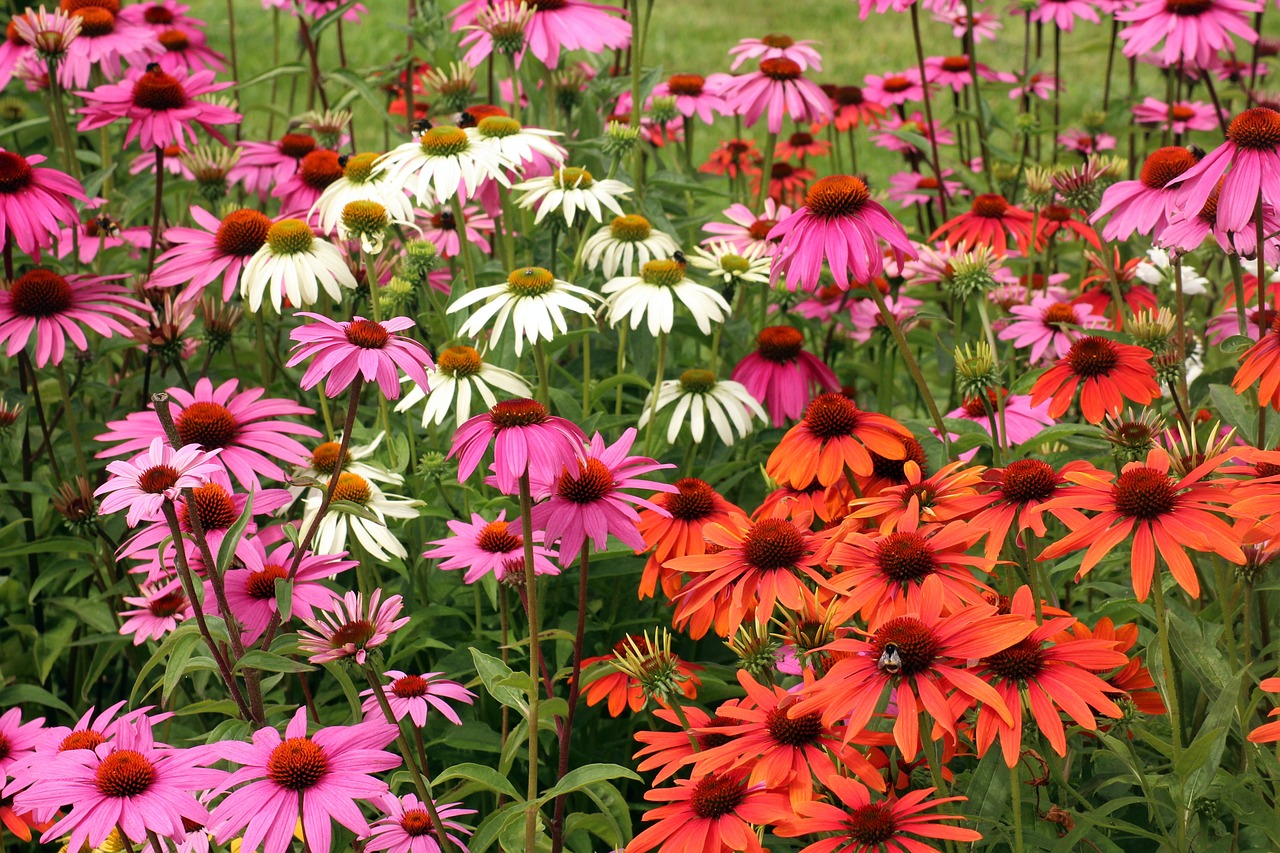
They do not appreciate hot full afternoon summer sun one little bit. So I recommend filtered sun in the afternoon or good sun only in the morning when positioned on the east.
To optimise and lengthen their flowering period it is good to dead head them. However upon their final flowering, many leave them to form seed heads to both collect the seeds and to create structural winter silhouettes, especially enhanced when the morning dew or frost linger on them.
Rich in antioxidants, the Echinacea’s dried roots and rhizomes are used in herbal medicine and said to be an aid boosting the immune system, helping combat the severity of infections such as common cold and flu. It is also said that it may reduce blood pressure. The native American tribes used the roots as a general medicine.
So if by chance you do have the spare room to create a large sweep of a visual masterpiece of Echinacea, I strongly encourage you to do it. Maybe a future client will understand the beauty of this fine floral fiesta and be inspired to include it in their new garden design. Or possibly someone one who reads this blog is brave enough to execute it. Yes, maybe it is all just a dream but here’s hoping.
Happy gardening and have fun,
Regards Ned McDowell.